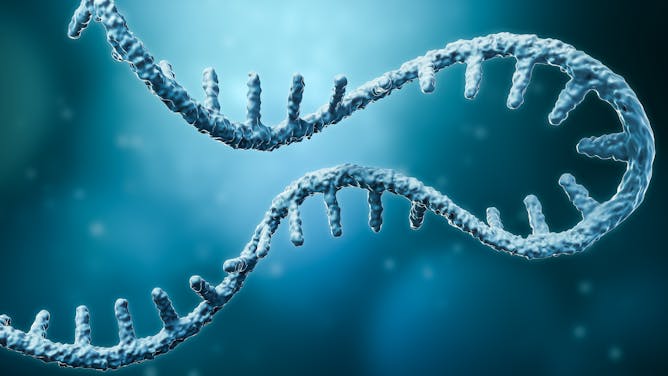|
When the coronavirus erupted onto the world stage in 2020, research into mRNA vaccines had been going on for around 30 years and they were ready for primetime. But protecting against the coronavirus is just one potential use of these vaccines. Studies in both animals and humans are looking at how mRNA and DNA vaccines could be used to treat cancers and chronic diseases like HIV. Meanwhile, research is underway into how they could help with autoimmune disorders or replace missing genes in people with genetic diseases.
Deborah Fuller is a microbiologist at the University of Washington who has been studying mRNA and DNA vaccines since their early days. In her article – adapted from an interview I did with Dr. Fuller on The Conversation Weekly podcast – she explains how using genetic code instead of dead virus for a vaccine allows for far more control over the immune response, opening up a range of medical possibilities that not long ago seemed
out of reach.
Also today:
|

|
Daniel Merino
Assistant Science Editor & Co-Host of The Conversation Weekly Podcast
|
|

Nucleic acid vaccines use mRNA to give cells instructions on how to produce a desired protein.
Libre de Droit/iStock via Getty Images
Deborah Fuller, University of Washington
DNA and mRNA vaccines produce a different kind of immune response than traditional vaccines, allowing researchers to tackle some previously unsolvable problems in medicine.
|
Politics + Society
|
-
Lee Feinstein, Indiana University; Mariana Budjeryn, Harvard Kennedy School
As Russia threatens to invade Ukraine, Ukrainians wonder about the worth of a 1994 agreement signed by Russia, the US and the UK, who promised to protect the newly independent state’s sovereignty.
-
George B. Cunningham, Texas A&M University
Despite efforts to diversify its coaching ranks, the NFL still has an abysmal record of hiring members of minorities not only as head coaches but also for coveted assistant coaching jobs.
|
|
Economy + Business
|
-
Sarah Webber, University of Dayton
The government makes the information nonprofits report on this form available to the public, enhancing transparency and accountability.
|
|
Environment + Energy
|
-
Kevin Hamilton, University of Hawaii
A phenomenon first theorized over 200 years ago is also a telltale sign of nuclear tests.
|
|
Ethics + Religion
|
-
Molly Jackson, The Conversation
A German report accused retired Pope Benedict XVI of mishandling several cases of sexual abuse in the 1970s and 1980s. Here are a few of our related articles on the Catholic Church’s crisis.
-
Brooke Schedneck, Rhodes College
Thich Nhat Hanh’s teachings, which earned him a global following, gave simple instructions on mindfulness and emphasized how it could be practiced anytime, even when doing routine chores.
|
|
Science + Technology
|
-
Margaret Hu, Penn State
By shutting off internet access completely, the government of Kazakhstan was able to silence dissent, hinder protesters’ coordination and keep the populace in the dark.
-
Julie Sheldon, University of Tennessee
How did penguins end up with so few bones – and become lightning-fast swimmers?
-
Alysson Light, University of the Sciences
The proportion of women in a discipline influences how rigorous and trustworthy people rate the field overall, as well as whether they categorize a STEM field as a ‘hard’ or ‘soft’ science.
|
|
Education
|
-
Lumina Albert, Colorado State University
As schools across the US begin to teach students and staff how to prevent human trafficking, a scholar explains five key elements of anti-trafficking education.
|
|
|
|
Reader Comments 💬
"Given that the world is woefully behind in limiting production of greenhouse gasses, already resulting in political upheaval and catastrophic changes to weather, agriculture, and migration, this article underscored for me how removing carbon from the air will be an essential part of addressing this critical issue...”
– Reader Karen Marker on the story These machines scrub greenhouse gases from the air – an inventor of direct air capture technology shows how it works
Like this newsletter? You might be interested in our weekly emails:
|
| |
| |
| |
| |
|
|